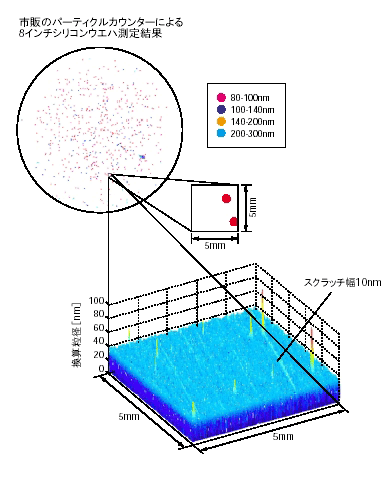The minimum detectable size for particles is 50nm at best in a conventional particle counter. In this new measuring system, all scattered light can be guided to the PMT using the ellipsoidal and parabolic reflectors. At the same time, background light is eliminated as much as possible, which makes it possible to measure scattered light corresponding to a particle with a diameter of 25 nm. Our developed measuring system is able to detect defects such as scratches of namometer order width and microroughness, as well as particles of namometer order diameter on a Si wafer surface.
The middle left figure shows the result of measured particles on the surface of an 8-inch Si wafer with a conventional particle counter. The bottom left figure shows the result in an area of 5mm×5mm on the same Si wafer with the developed measuring system. It turns out that our system can detect particles with diameters smaller than 50nm, which is difficult to accomplish with the conventional particle counter. In addition, this system is able to measure nanostructures on the surface, such as scratches of approximately less than 10 nm in width. |

Measured results of particles and scratches on Si wafer (5mm x 5mm) by our developed system.
|

